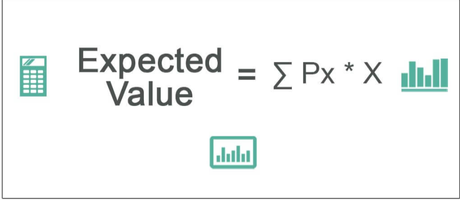Expected number values are the means of random variables from a set of values. For example, when rolling a die, there are expected values of each side rolling repeatedly. Expected values are critical. You can calculate the expected value of each side and its probability of the outcome. The expected number values are critical when you are going to make a decision.
A business can scan the probability of different variables in the marketplace. Knowing all expected factors in a market, then easy to produce a product or service. The expected number calculator is a good resource for knowing all possible outcomes of certain variables. You can scan the variable of price and its expected effect on the demand for the product or services.

Expected Number Values
A production manager is always in pursuit of knowing the needs and wants of consumers. So brands can produce all products according to consumer requirements. This can only be done with the assistance of the expected values of all factors in the marketplace. Like Product Features, Product Prices, Product Expected warranty, etc. All decision-making is done based on the expected values of these factors.
How Calculate Expected Values?
The formula for calculating expected values is for a finite and infinite number of values. The factors in a market can be finite and infinite.
Expected variables can be different in a certain situation.
The type of the Expected number values are:
⦁Finite Expected Value
⦁Infinite Expected Value
Finite Expected Values
In a situation where a finite number of outcomes are possible. Then finite situation Expected variable with a finite number of outcomes. Businesses tend to generate alternatives for better ground for decision-making. In a marketplace, there can be finite and infinite numbers of variables. When there are a finite number of variables it means variables are in a limited proportion.
Example:
For example for controlling the price of a product, there can be limited variables like inflation, Consumer behavior product quality, etc
For finite expected values
Where:
= Expected value
= Expected value of variable x
= Probability of occurrence
Infinite Expected Values:
In a situation where an infinite number of outcomes are expected in a market. It means the market is uncontrollable and may cause unexpected situations. In a market where the probability of occurrence is infinite. Then unlimited variables are expected to occur and such a market is uncontrollable.
Example:
There can unlimited number of variables for rising inflation like currency exchange rate, economic condition, Baking sector … and so on.
In this case, an infinite expected formula is used:
Where:
= Expected value
= Expected value of variable x
= Probability of occurrence
Example:
Let us consider a discrete random variable X representing the outcomes of rolling a fair 6-sided die.
11/6
21/6
31/6
41/6
51/6
61/6
Solution:
All sides of the die = 6
Probability of occurrence = ⅙
E(x) = (Probability of occurrence) (Side Number)
Expected Value of any face of die on each side
Expected Value = E(x) = ⅙(1) + ⅙(2) + ⅙(3) + ⅙(4) + ⅙(5) + ⅙(6)
Expected Value = 3.5
The expected value of each side of the die is 3.5 when rolling a die over and over again. Rolling a die means the possible outcome. All sides have an equal probability of 3.5 to whichever side throws the die. The expected number calculator makes it possible to calculate all the possible outcome and their probability.
Why Calculate Expected Values?
Expected values are critical in knowing all probability occurrences. There are several reasons for knowing the probability of occurrence in the marketplace.
Brands when able to know all possible outcomes then produce products according to consumer needs and wants. There can be different variables in the marketplace Like Product Features, Product Prices, Product Expected warranty, etc. All decision-making is done based on the expected values of these factors. Managers can generate alternatives to take preventive actions in uncertain conditions. This assists in finding an alternative to avoid uncertain conditions and ambiguity.
⦁Central Tendency of Probability
⦁For Planning and Decision Making
⦁Generation of Alternatives
Conclusion
The expected number value is necessary for planning and decision-making in business and finance. Once you can know all the possible outcomes, you can take effective actions. Planning is the key for an organization to become successful in the market. The expected number calculator makes it possible to know all the possible outcomes in various situations. Managers can generate alternatives to take preventive actions in uncertain conditions. This assists in finding an alternative to avoid uncertain conditions and ambiguity.

